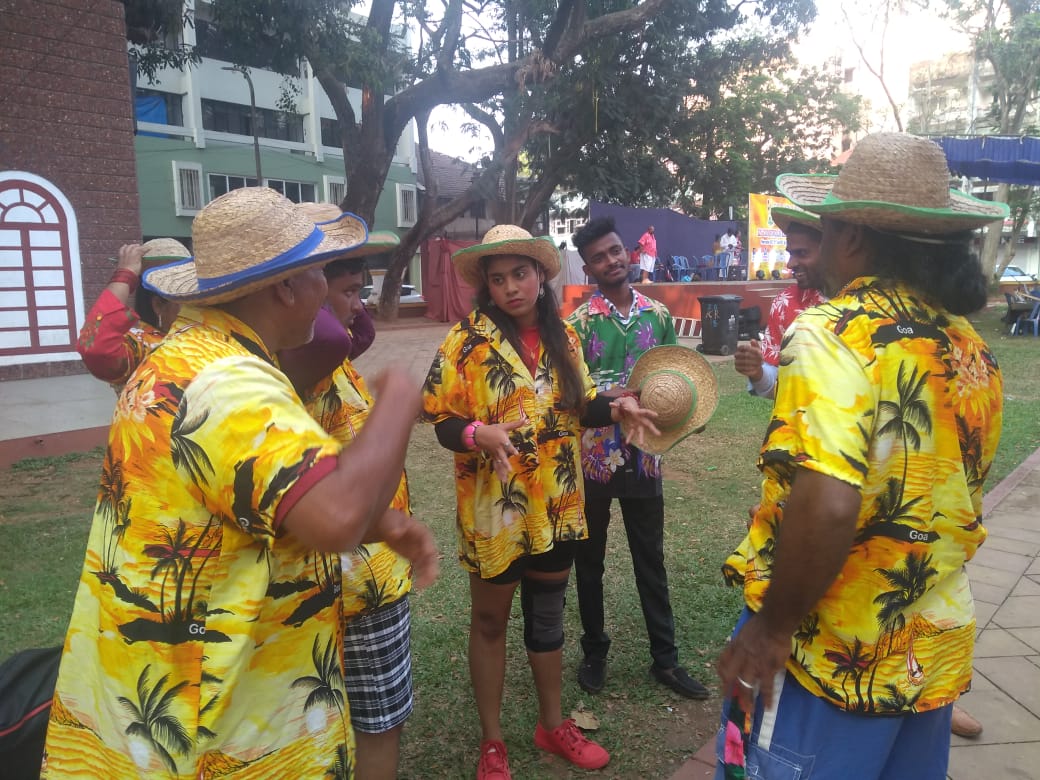If the tiatr is the poor cousin of Konkani and Goan culture, the Fell is the poor cousin of the poor cousin. This is creativity of simple folk

Last weekend, I spent a good couple of educative evenings at the Azad Maidan, watching the noisy, laugh-a-minute, lighthearted folksy set of plays called the 'fell tiatr'. While other aspects of the Carnival have been transformed and transfigurated, this is one which continues with some of its earlier trends from the villages of Salcete.
In some ways, it has changed too. The Zomnivoile Fell or Khell (probably better spelt as 'Hell') has been shifted from rural Salcete to Panaji's old central business district.
For some reason, the competition for this set of plays is conducted during the season of Lent, rather than during the pre-Lenten Carnival. But maybe everyone has something to gain from this. The Carnival is the peak season for these plays to be "staged" in rural Salcete.
Our generation of those interested to understand Goa are prisoners of our geography, history and attitudes. For one, I've only encountered the Fell-Khel-Hell in Salcete. Secondly, it's a tradition we are fast forgetting, due to accidents of history (or politics). Thirdly, it fits low in the hierarchy of our cultural preferences, and this is where attitudes play a role.
The Panaji event on the weekend takes one back to the late 1980s. At that time, the Times of India lone journalist covering Goa, the adventurous and very open-minded Debashish Munshi, would lead the rest of us on his 'Know Your Goa' campaigns. We did once search around to locate these plays, before ultimately finding one set of performers along the old Verna road.
While walking past Varsha Book Stall the other day, I asked the Bhate brothers, "So what's happening there?" The loud and dramatic noise suggested a Konkani play, or something like it.
In fact, this is something "like" the more popular and commercially vibrant Konkani tiatr.
Over the past dozen years, the Goa Tiatr Academy has been holding a competition of this festival. Mario Menezes, the popular tiatrist, who sadly passed away in the course of the last year, explained the tradition of the Zomnivelo Khel, when we met up in early 2022.
He pointed out that the Konkani tiatr was born in Bombay (over a century ago). On the other hand, the Zomnivelo Khel was actually Goa-born and bred. Its name comes from this simple, folk drama form being performed without a stage. Or, as it was performed from the 'zomin' (ground) itself.
Locals involved say the travelling troup visits different villages of Salcete, and puts up to five sets of short playlets during the three days of Carnival, on each day. Usually, these events are conducted without any tickets. But some sponsor at the village level steps forward to meet the costs and pays those putting up these performances.
But they have spread further than Salcete, even if now being forgotten and largely overlooked.
As Joyce Nazareth, from Mumbai commented in one online discussion: "As a child I enjoyed seeing these plays and I used to follow them from one place to another, from Love Lane, Byculla to Mathapakady, Mazagaon. I got a beating from my father for following these plays and actors. The actors were super talented and crowds of people watched them act. This was in the 1940s."
Someone identifying themselves as Tazza Hawwa also commented in cyberspace: "Just to add -- in North Goa Khell Tiatrs were staged at a stage made of stones at Acoi, Mapusa, by local actors, singers, comedians and musicians from Bardez. Directed by Joe Meny Furtado, and his brother late Cleofas Furtado from Sarzora, Chinchinim, both [of whom] were also active at the traditional khell tiatr spot at Dandevaddo. The khell tiatrs in Mapusa were staged during Carnival and for village feasts."
"Later, their brother-in-law and veteran (prompter) Daigo Fernandes carried on organising the tiatrs at the Mapusa Market during his tenure as the president of the Mapusa Merchants Christmas Festival Committee. This was all started in the early 1980s. Simultaneously, there were also tiatrs staged in Ansabhat, Mapusa and neighbouring villages like Parra, Calangute, Siolim, Aldona, Saligao, etc. This tradition and culture is still carried on in the Mapusa Market during Christmas by Bond Braganza and other members of the Festival Committee. Not forgetting the tiatrs and musicals in the fields opposite the Mapusa Police Station at a venue called Narvekar Matov in the 1970s and 1980s."
The themes at Panjim last week ranged from family disputes to village rivalries, depiction of the simple Catholic Goan folk who make our State what it is. There was also a focus on greed and ambition, religiosity and altruism, and so many values and attitudes that shape our lives.
The skills shown by the local folk in acting, creating the music and a lot else was really something.
But in today's Goa (and in the past too), however, not all forms of culture and tradition are treated equally. How much support and patronage a tradition gets depends on how the political class dominating Goa at any stage views it.
If the tiatr is the poor cousin of Konkani and Goan culture, the Fell is the poor cousin of the poor cousin. This is the creativity of simple folk.
The work by the Goa Tiatr Academy to promote the same is laudable. But one competition once a year is too little and too late. Scholars like the late Pramod Kale and Prof Andre Rafael Fernandes have been studying Konkani theatre. But where is the next generation of scholars and researchers following in their footstep?
Till we take more active steps in promoting such little-known and neglected forms, we definitely cannot claim to have done our duty towards our past and our traditions.